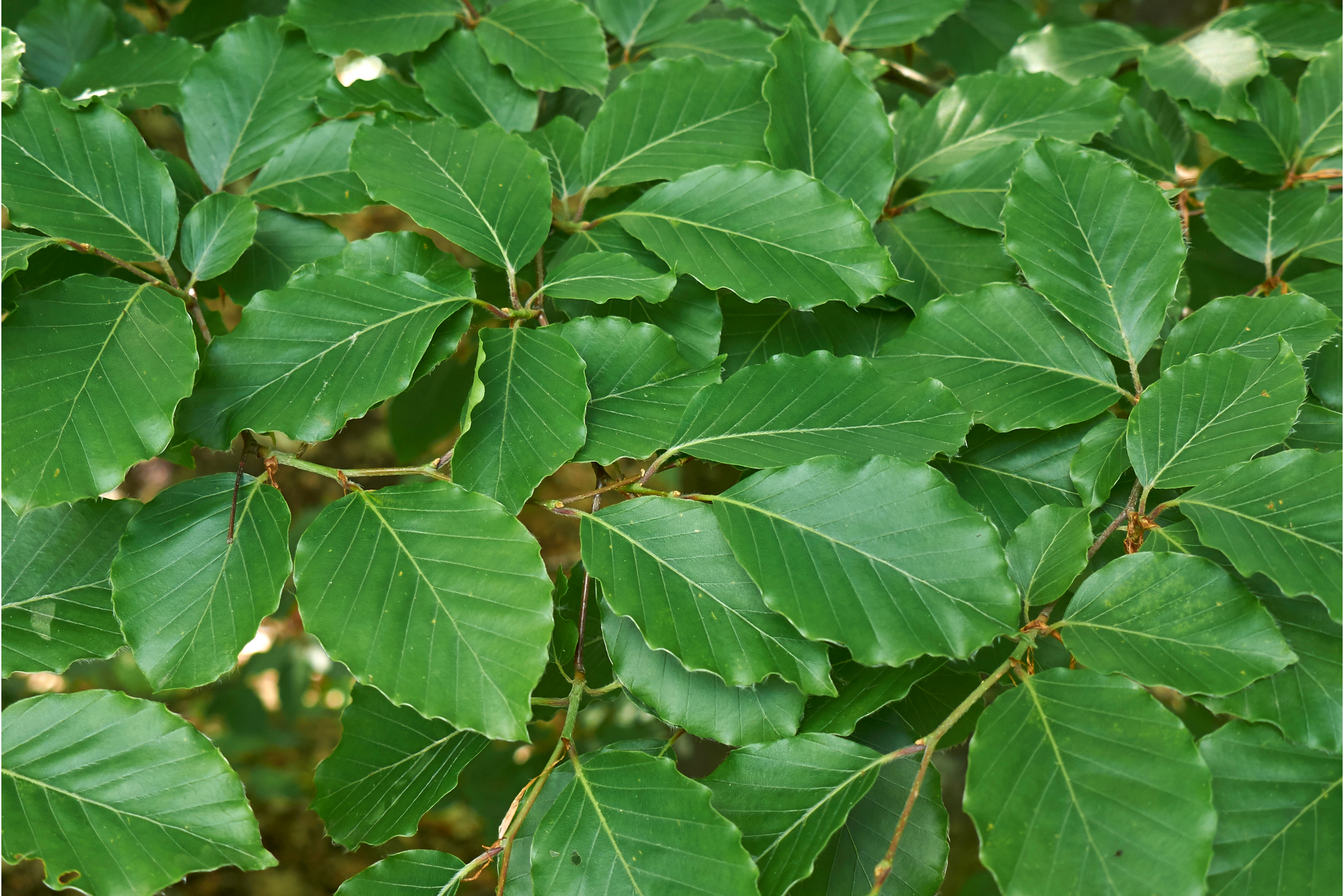European beech
(Fagus sylvatica)

Description
Fagus sylvatica, commonly known as European beech or common beech, is a deciduous tree species native to much of Europe, from southern Sweden to northern Italy, and east to Ukraine and the Caucasus. It is a member of the Fagaceae family, which also includes oaks and chestnuts, and is one of the most common tree species in Europe's temperate forests. In this article, we will explore the characteristics, uses, and cultural significance of Fagus sylvatica. Taxonomy and Nomenclature: The scientific name of European beech, Fagus sylvatica, was first formally described by Carl Linnaeus in his seminal work, Species Plantarum, published in 1753. The genus name Fagus is derived from the Greek word "phago," meaning "to eat," referring to the edible nuts produced by the tree. The specific epithet sylvatica is Latin for "of the woods" or "forest-dwelling," reflecting the tree's natural habitat. Description: European beech is a large, slow-growing tree that can reach heights of up to 50 meters (164 feet) and live for more than 200 years. The bark is smooth and gray when the tree is young, but becomes rough and furrowed with age. The leaves are alternate, simple, and elliptical, with a smooth, wavy margin and a pointed tip. They typically measure between 5-10 cm (2-4 inches) in length and turn a golden-yellow color in the fall. European beech is monoecious, meaning that it produces separate male and female flowers on the same tree. The flowers appear in early spring before the leaves and are small and inconspicuous, with male flowers borne in pendulous catkins and female flowers in small clusters at the tips of short stalks. The fruit of the European beech is a triangular, three-sided nut enclosed in a spiny, woody husk, known as a "cupule." The nuts are edible, although they are not as sweet or flavorful as those of the closely related American beech (Fagus grandifolia). Distribution and Habitat: European beech is widely distributed throughout much of Europe, from southern Sweden to northern Italy, and east to Ukraine and the Caucasus. It is a common tree species in temperate forests, where it often forms extensive stands and dominates the understory. European beech is adaptable to a wide range of soils, from clay to sandy loam, but prefers well-drained, fertile soils with a pH between 6.0 and 7.5. It is also tolerant of shade, making it an important species in forest regeneration. Ecological and Cultural Significance: European beech is an important ecological species, providing habitat and food for a variety of wildlife. The nuts are an important food source for many small mammals, such as squirrels and chipmunks, while the leaves and bark are eaten by deer and other browsing animals. The tree also provides important nesting and roosting sites for birds and bats. In addition to its ecological importance, European beech has a long history of cultural significance. In Europe, the tree has been used for centuries for its dense, durable wood, which is used in furniture, flooring, and cabinetry. The nuts are also used in cooking, particularly in traditional European dishes such as beech nut soup and beech nut bread. The tree has also been used in traditional medicine for its astringent and anti-inflammatory properties. In folklore, the European beech is associated with wisdom, prosperity, and protection. The tree is said to possess magical powers, and its wood is often used in ritual objects such as wands and talismans. In Celtic mythology,
Taxonomic tree:







